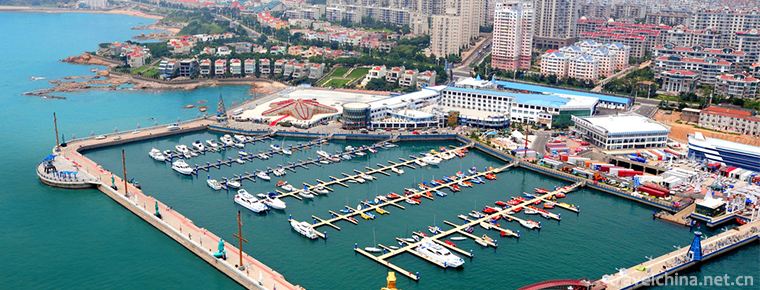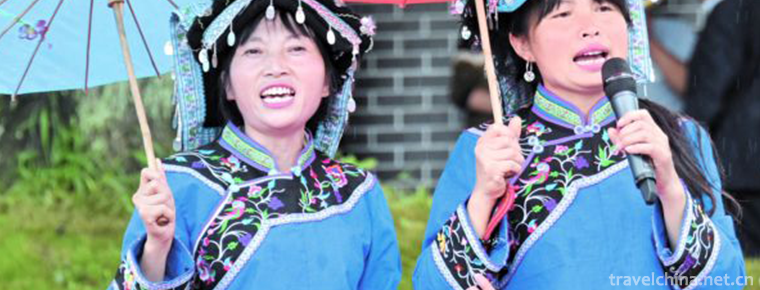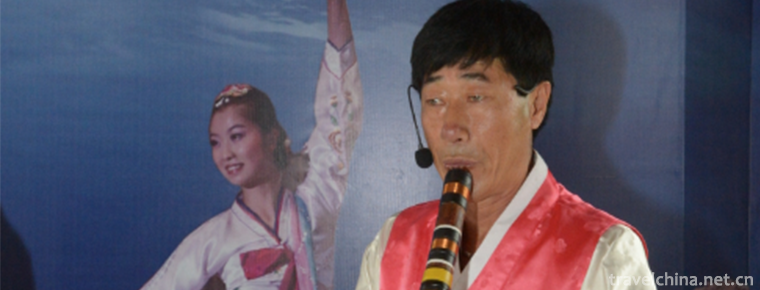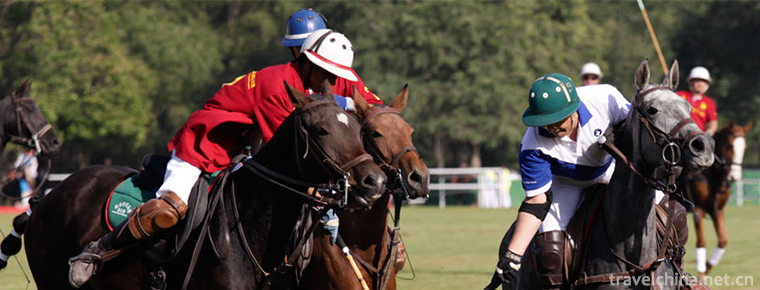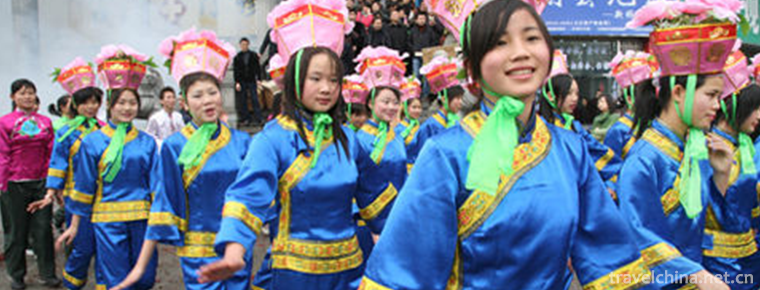Salar Wedding
Salar Wedding
Salar wedding ceremony is one of the most important ceremonial activities in Salar people's life etiquette. Salar traditional wedding ceremony is held in the midwinter of each year. From engagement to wedding ceremony, it needs several procedures, such as matchmaking, matchmaker, engagement tea, bridal gift, chanting marriage sutra, marriage and returning home, for about half a year.
On May 20, 2006, the Salar wedding ceremony was approved by the State Council and listed in the first batch of national intangible cultural heritage list.
Historical Origin
So far, the ancient Turkic wedding custom of offering "sheep's back" has been retained in the Salar wedding ceremony. These customs have disappeared in the life of the descendants of the Turkic nationality, but they are inherited in the Salar customs far away from the Turkic cultural circle in time and space. Therefore, they are the living fossils of the study of ancient Turkic culture.
The "Duiwei Oyina" retained in the Salar wedding ceremony is a national dance with certain dramatic characteristics, which takes the traditional education of the history of national migration as its main content. It was preserved in the wedding before 1950s. However, due to social changes and shortened marriage period, this form of expression no longer exists, only some elderly people still have memories.
Xunhua is the only Salar Autonomous County in China, known as the "home of the Salar Nationality". Salar people call themselves "Salar". In Chinese historical books, there are many other ways of writing, such as "Salar", "Sha" and "Sa". They are also called "Salah" because they believe in Islam, and "Salah" by other local nationalities. Sala is one of the minority nationalities who believe in Islam in China. Religion has a profound influence on its historical development, political, economic and cultural aspects.
Salar weddings are all held in the middle of winter. In addition to the lack of farm work, idle hands, sufficient food and oil, fat meat and good storage, the main staffing, all the people who went out have returned home one after another.
In the past, the Salar people generally practiced early marriage system, with 9-year-old women and 12-year-old men taking on the "non-day rule" (sacred destiny) of marriage. Since then, Ana people are not allowed to go out of the door one step, can only stay all day in the boudoir embroidery or learn to cook tea, etc. matchmaker come to the door to say kiss. Salars, both men and women, are proud to be matchmakers. They believe that every marriage is equal to the merit of building a "minaret". During the engagement, the man first gave Anna a a pair of earrings, which means "tied up", and no longer allowed others. A few days later, he sent a black scarf with a scarf, which was considered a formal engagement. Parents are the sole decision maker, but the consent of close relatives must be obtained, and uncle's opinion is particularly important.
When giving lottery gifts, although the momentum is great, the gifts are not much. The number of people giving gifts is less than twenty or thirty, and more than eighty or ninety. They are all men. Ordinary people only have one set of fine clothes (satin or corduroy), one set of coarse clothes (plain cloth), and some cosmetics. Rich families send one more Lamb Leather tube. The woman only gave the groom a pair of cloth shoes and embroidered socks in return. This is because when Fatima, the daughter of the Prophet Mohammed, married Ali, Ali's family was so poor that it had only a liter of barley, a hand-pushed stone mill and a shabby mattress. Fatima was so cold that she cried and complained to her father. The prophet enlightened his daughter patiently and said that if one wants to be satisfied in the world, he should thank Allah for this possession. Fatima listened and turned her worry into joy. The Salar people have always followed this example faithfully.
Main steps
The conclusion of marriage between young Salar men and women is generally divided into four steps:
First of all, we need to raise relatives. When a man sees a girl, he asks matchmaker (usually a man) 1-2 people to greet the girl. If the woman's parents agree, he then gets the consent of the girl and her uncle and uncle, followed by Nading.
Secondly, with the consent of the female family, the male family still petitioned matchmakers to send "fixed tea" to the woman's home on a fixed date. Generally, a pair of eardrops, one piece of clothing and two pieces of Poria tea were sent to the woman's home. When the woman accepted the fixed tea, she gave her formal consent and no other person was allowed. In the early days, when the parents of the woman agreed, they also invited their relatives, uncles and matchmakers to share the "oil mix" with the matchmaker. After eating, the matchmaker also brought back some replies to the man's family to show that there was no difference.
The third is the gift giving, which is called "Male Eindel" in Salar. The number of gifts given by a man through a matchmaker depends on the financial situation of the man's family.
Finally, the marriage is to be married. Both men and women choose the auspicious day (mostly the Islamic day of gathering, that is, Friday's "Lord's Day") and ask the Imam to read the "Nikahai" (Sutra of Joint Marriage) and give the marriage precepts. Marriage must be officially recognized.
Wedding customs
The marriage custom of the Salar people is both simple and joyful. Weddings are usually held at dusk in the middle of winter. Married relatives (men) generally do not enter the home, first in the outdoor courtyard of the woman's home waiting, listen to Ah Ma recite "Nikahai"; the elders of the woman to greet the bridegroom to wear a new hat, wear embroidered belts, and then accompanied by married relatives, kneel before Ah Ma, the bride kneels in the corner of the room. After reading, a plate of walnuts and jujubes was scattered to the public, and "ancient hemp and hemp" (fried pasta) was distributed. The woman's family also held a banquet to entertain the married. The married couple returned first. The next day, two married women and other relatives and friends sent the bride to the man's home.
Before sending the bride, more than ten young men will be sent to the bride's home to send dowry and dowry. At this time, the men, women and children of the neighborhood rushed to sit around the bride, watching the aunts and sisters-in-law shave the bride, dress up, and listen to the bride crying "Sahels" (equivalent to the cry of other nationalities). At the time of holding the lamp, the man brought a horse or mule to marry the bride. With the help of uncles and uncles, the bride retreated, bowed her head and waisted, cried "Sahels", walked slowly out of the gate, from left to right, circled and rode around, and slowly scattered a handful of grain (symbolizing the abundant grain in the family, rooting and sprouting in the mother-in-law's family), and mounted from right to married two. Accompanied by women, surrounded by other relatives and friends, the grand send to the man's home. At this time, the women who married to the man's village in the women's village, carrying a dish of fragrant "Bili Buhai" (oil-mixed pasta), warmly welcomed in the street outside the village, and ventilated a message, informing the village of "crowded door" situation, so that the relatives have a mental preparation.
When arriving at the man's door, fire salute guns, send relatives and relatives around the bride forcibly riding into the door, while the man closes the door and solicits gifts, but also let the bride get off the horse and walk to the entrance, you block me to rush, in order to win or lose the battle. This custom of "squeezing doors" is still prevalent today. After entering the door, everyone went to Kang to attend.
Before the bride eats, she gives good wishes to her relatives and elders. Then she uses chopsticks to uncover the bride's veil, which is called "Brazilian Ash" in Salar. This pair of chopsticks symbolizing auspiciousness must be recovered by the groom's family at a cost. After the meal, the groom's cousins brought a basin of clean water and came to ask the bride for money. They use chopsticks or hands to stir the water in the basin, and let the bride throw the copper plate in the water, which symbolizes her mother-in-law's innocence like water. May the bride take root deeply and bear fruits. Salar calls this "Gagil Bridge Yi".
At this time, the young people got up one after another and caught the groom's father, brother and uncle. They covered their faces with pot ash, wore broken straw hats, hung hollow turnip mirrors in their eyes, raised them with sticks, or made yaks ride around in circles. They were very lively until they got a good sum of money. Then they performed "Camel Opera" and "Banquet Music".
When they got married that night, the next day the chickens crowed. The newlyweds bathed in Islam and went out dressed to meet their parents-in-law and elders. The bridegroom went to visit his wife's parents-in-law, Dao An. In the public, the woman also opens the box "cycloidal needles and threads", displays the dowry accompanying the bride, and everyone watches the elaborate embroidery of the bride one by one. The bride also presents embroidered shoes, socks and pillows to his family and uncles. In order to express the deep friendship between the bride's parents and their close relatives, the man also gives part of his money and rewards.
For those who send their relatives, they are first served with tea and have a long journey. On that night, they are invited to stay at Ben Agnai's and Kong Musan's houses. The next day, they are given a banquet and entertainment. At the end of the banquet, we should also distribute "meat portions". Every woman's closest relatives in a distant room, regardless of age, should distribute a portion of cooked beef and mutton, and give money or clothing to the bride's parents and closest relatives. Immediately, the old lady said a few words of "I Re Hezuzi" (wedding compliment), wishing the newlyweds love each other and grow old together, asking their relatives to take more care of the bride who is "young and ignorant" and preach by example.
Inheritance value
Earlier, when the Salars held their weddings, they also performed the game of "Gaioina" (Camel Game). This is a national dance with certain drama characteristics, which mainly focuses on the traditional education of the history of national migration. This game is mostly played in the moonlight of the courtyard. It is not only a lively entertainment program, but also a way to trace the history of the migration of its ancestors from Central Asia.
The wedding ceremony of the Salar nationality was recorded in Xunhua Zhi compiled during the reign of Qianlong in the Qing Dynasty. For more than 200 years, the whole wedding ceremony procedure has not changed much, and the inheritance system is relatively complete, which is of great value to the study of the cultural history of the Salar nationality.

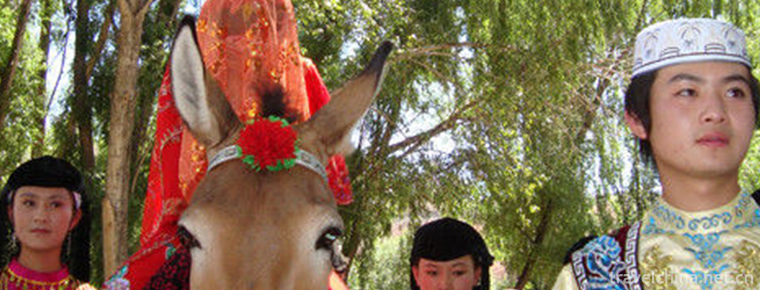
-
Mingsha Mountain Crescent Spring Scenic Area
Mingsha Mountain Crescent Spring Scenic Spot is located 5 kilometers south of Dunhuang City, Gansu Province. It covers an area of 312,000 square kilometers.
Views: 80 Time 2018-12-12 -
Qingdao Yinhai International Yacht Club
Qingdao Yinhai International Yacht Club is located at No. 30 Donghai Middle Road, Qingdao City. It is the first national AAAA class tourist attraction in China with yacht club as its main body..
Views: 117 Time 2019-02-07 -
Nanchong Xishan Scenic Area
Nanchong Xishan Scenic Spot, located in the west of Shunqing City, is a provincial scenic spot and a national 4A-level tourist attraction. It is the destination of "Three Kingdoms Cultural Explor.
Views: 203 Time 2019-02-25 -
Buyi Chabai Song Festival
The Buyi Chabaige Festival is a commemorative festival of the Buyi people in Xingyi, southwest Guizhou Province. It is held in Chabaichang, Dingxiao Town, Xingyi City.
Views: 152 Time 2019-04-04 -
Korean Dongxiao Music
The Koguryo History Music Records records that Dongxiao belonged to the musical instruments of the Tang Dynasty in China. During the period of Shizong in the Li Dynasty.
Views: 126 Time 2019-04-16 -
Jiangzi dama Festival
Dama Festival: It is a traditional Tibetan program with unique style in Jiangzi area of Tibet. It is said that the first Dama Festival is a horse race and archery competition held to celebrate the com.
Views: 165 Time 2019-05-05 -
Polo
Polo refers to a sport in which horses are riding and polo clubs are used to hit the ball. In ancient China, Polo was called "hitting the bow". It was invented in the Han Dynasty and flouris.
Views: 136 Time 2019-05-15 -
South China Sea Channel
South China Sea Channel is a traditional folk culture in Wenchang City, Hainan Province. Local fishermen have compiled their own "secret book" for navigation since ancient times. It is a han.
Views: 148 Time 2019-06-07 -
Quanfeng Lantern
Quanfeng Lantern is a traditional folk art form in Quanfeng Town, Xiushui, Jiangxi Province. It is an artistic performance activity between lamp, opera and dance. Its main feature is the performance o.
Views: 150 Time 2019-06-11 -
Huangshan University
Huangshan University, formerly known as the Huizhou normal school, was founded in 1978. In December 1997, it merged with the Huizhou Junior College of University of Science and Technology of China. It.
Views: 127 Time 2019-11-17 -
Zhuokeji chieftains official village
Zhuokeji chieftain's village is located in xisuo village, zhuokeji Town, 7 km away from malkang county. The village was built in 1718 in the reign of Emperor Qianlong of the Qing Dynasty. It was a four story blockhouse. It was destroyed in the fire in 1936. From 1938 to 1940, the Tusi Suo Guanying organized human resources to rebuild it..
Views: 294 Time 2020-11-07 -
Nanchong mineral resources
Nanchong mainly has rock salt, oil and natural gas, placer gold, ferrotitanium, uranium, phosphorus and other mineral resources. Nanchong is located in the core of Nanchong rock basin, the largest rock salt sedimentary basin in Sichuan Province. Underground.
Views: 336 Time 2020-12-17

